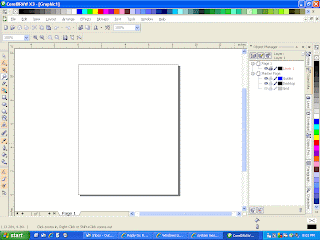In what ways does your media product use, develop or challenge forms and conventions of real media products?
When creating any form of media, it is essential that you ensure it conforms to the forms and conventions of media products, this is to maintain that the decoder will be able to understand your piece, as well as receive the content you are trying to deliver, in the way (as the encoder) you desire it to be received.
To create our trailer, it was important that we highlighted the particular genre of our film, which ended upon a choice of a dark drama/romance so it was important our conventions challenged this genre, in order to ensure it appealed to our identified the target audience, whom the film would be aimed at, and then manipulated the forms of conventions of media into a way where they would appeal to our target audience. In order to help enforce our genre, we established a combination of camera shots that helped us to portray the emotion relevant to this genre, such as close ups to show the degree of devastation and emotions our characters feel throughout the trailer, helping to convey the depth of the “dark Drama”. We have also contributed medium ranged shots to help develop the extent of the romance within our trailer, as these shots help to show “rob” and “Alice” together, as a couple. We also manipulated “Dolly” shots, in order to add a sense of realism to the footage, as well as helping our target audience to immerse themselves within the trailer, drawing them towards the film. Close ups were also employed in order to highlight the use of drugs, one of the films key concepts.
We also took advantage of slightly more obscene media conventions, such as the use of saturated colour in order to highlight that the effected footage was in the past, and not so much the present like the majority of the trailers content. This helps our target audience to gain a better perspective of what is occurring within the trailers content. This is more of a convention which we challenged, as this would not often be seen within a trailer, due to the fact it gives a vast understanding of the plot away, as well as insinuating a basic chronological order which helps to anchor our somewhat confusing plot, enabling the audience to grasp a better understanding of our trailer plot.
(the black and white establishing the connection to the past)
In conjunction with the diversion of colour, we have also utilised screen captions, to again highlight various concepts of the film, once again aiding the target audience to relate to certain concepts of our genre, thus intensifying the media forms and conventions found within our trailer, the presence of captions also enabled us to include quotes from various media outlets, giving their opinions on the film, and these can be extremely important as many viewers will take account of what the critics say when determining if a film is worth watching or not. We also included a basic voiceover within out trailer, not only to utilise another convention but to provide more substance to the trailer, aiding our target audience in understanding the context of the film. Another convention of film trailer media we decided to use was the concept of a montage within our trailer, this was a quick cycle of various high content clips, which pursued to make the trailer that bit more dramatic, yet the speed of the montage ensures that whilst the clips were all clearly visible, they were not slow enough to give to much of the films content away. In order to aid the audiences understanding of the trailer and plot, we employed a voiceover in the form of the main character describing what has happened at the beginning of the trailer, this anchors the plot and the trailer in to ensure that it does not become to confusing. The inclusion of the voiceover also means that we have another basic convention of film trailers, which actual trailer production companies would include, much like we did, to ensure the audience retain some basic understanding of the plot, this can be witnessed in one of our inspirations, trainspotting, where the main character delivers a monologue in the trailer that provides so detail to the concepts of the film.
In conjunction with our trailer, I have separately produced two other media texts, a media magazine front cover featuring our film, as well as a film poster for the trailer. The magazine confined to the basic conventions of the media text, as it features all the basic elements of a magazine cover such as the masthead and puff ect, and in terms of a film magazine I have used a picture of the biggest “star” in our trailer for the main image as in terms of reality, this would attract the most interest. The poster I produced however challenges the basic conventions of a film poster, as there is no hint of the plot within the poster, ie no significant buildings or action, due to the dark nature of film, as I felt this would not be appropriate for all the potential witnesses, to combat this ill have done is included the characters in the poster, which helps to retain a sense of unpredictability, ensuring people will still be eager to view the film.
here we can see the poster of a Hollywood film poster, which shows a good amount of action included from the film, where as my poster only shows the character, highlighting the mystery.







